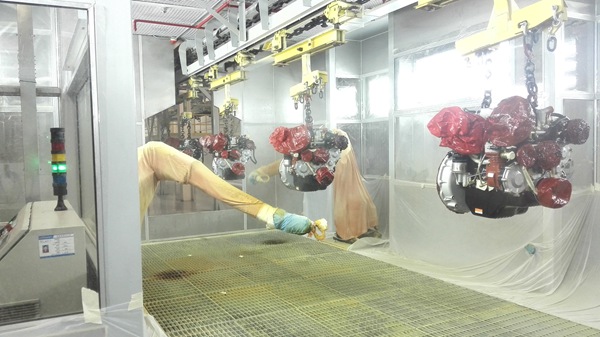+86-25-57063916
Corporate News
Your current location:Homepage > Corporate News
- Hygiene and Safety in Painting Process Production
- 2023/4/13¡¡Reading frequency:[964]

- Hygienic issues with powder coatings
Most powder coatings are composed of a mixture of resins, curing agents, leveling agents, pigments, fillers or matting agents, and other auxiliary components. Resins generally serve as adhesives, encapsulating other components in individual particles. At this point, other components cannot exist alone. Therefore, it greatly reduces the toxicity of other components such as pigments and fillers to the human body
Powder coating, as a type of powder, is classified as organic dust in foreign countries, so it also has the common characteristics of ordinary dust and poses certain hazards
Long term direct contact with powder coatings can cause irritation to the eyes, skin, mouth, and respiratory organs. If excessively inhaled into the human body (usually through breathing or skin intake), it is also harmful to human health and is detrimental to the lungs, blood, and skin of the human body, which may lead to silicosis, skin allergies, or dermatitis in some people
Safety production issues in painting operations
Powder coatings, due to their organic dust nature, also possess dust properties, namely, they are flammable and explosive substances. However, they have a higher ignition and flash point, as well as a higher energy for ignition and detonation. In the painting operation site, if operating procedures are violated or certain specific conditions occur, the possibility of combustion and explosion cannot be ruled out. Moreover, once an explosion occurs, its explosive intensity and destructive power will greatly exceed that of solvent based paint operations. Painting equipment manufacturers and painting operation units must have sufficient vigilance and attention to this point. To this end, the Ministry of Labor and Personnel and the Technical Supervision Bureau have issued the "Safety Regulations for Powder Electrostatic Spraying Process" standard, which is formulated by the National Technical Committee for Standardization of Painting Operation Safety
The pre-treatment of metal surfaces before painting, due to the use of chemical reagents such as acids and alkalis, it is necessary to pay attention to ventilation, waste liquid discharge, and three waste treatment
The possibility of powder explosion during painting
Any substance explosion has its combustion and explosion elements, and powder coatings only explode under specific conditions. The elements are£º
There are combustible substances present, and powder coatings are flammabl¡£
There is a certain concentration, that is, a certain amount of powder coating is contained within a certain volume£»
There is a large amount of combustion air£»
There is a source of ignition¡£
When the above factors coexist, it may ignite and explode¡£
Powder combustion process
At the powder coating operation site, if the surface of powder particles obtains energy, they will immediately decompose into gas and enter the air, forming a mixed gas. The heat generated by the heated gas will decompose the surrounding powder particles, generating new heat sources and forming new combustible gases. At this point, if a critical temperature ignition source or a certain energy electric spark occurs, the suspended powder will burn rapidly, generating a large amount of heat and high pressure, and the gas will expand rapidly. If limited by the container, it will eventually cause an explosion¡£
Definition and characteristics of powder explosion
The lower explosive limit concentration and ignition temperature of various powder coatings are different¡£ -
¡¡¡¡Previous:Combined overall mobile water spray booth
¡¡¡¡Next:No relevant information available at the moment!
